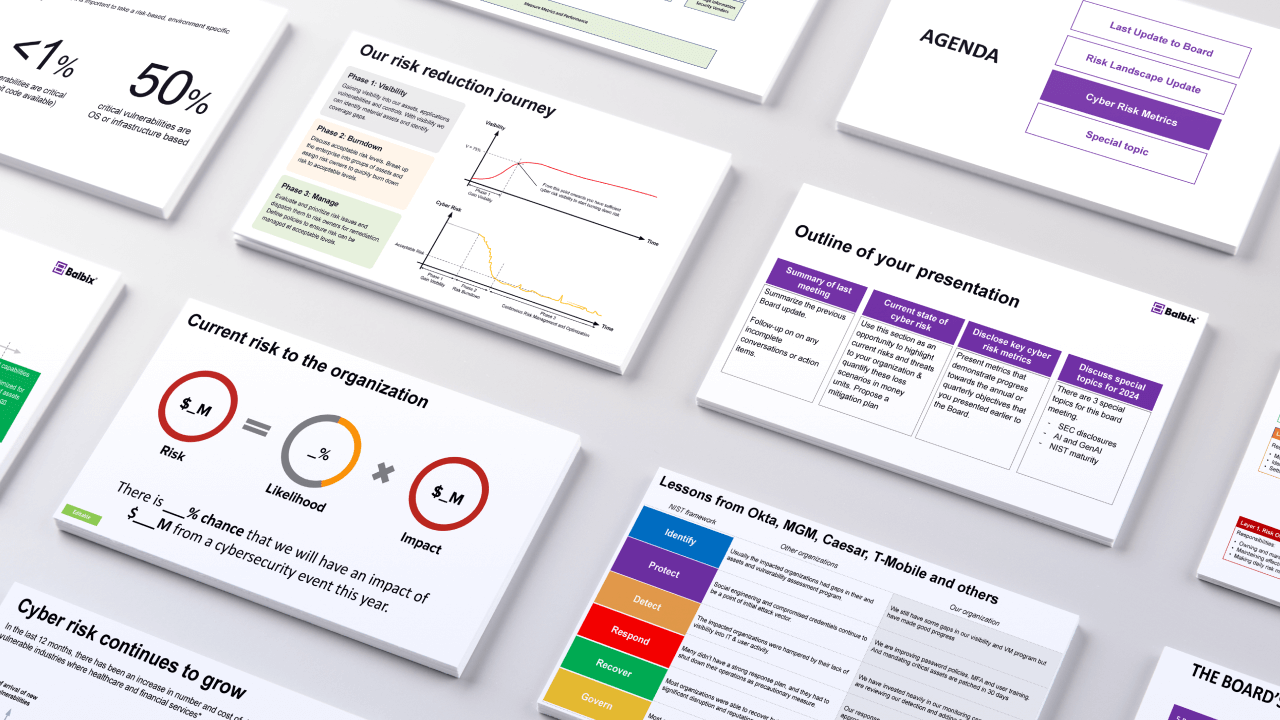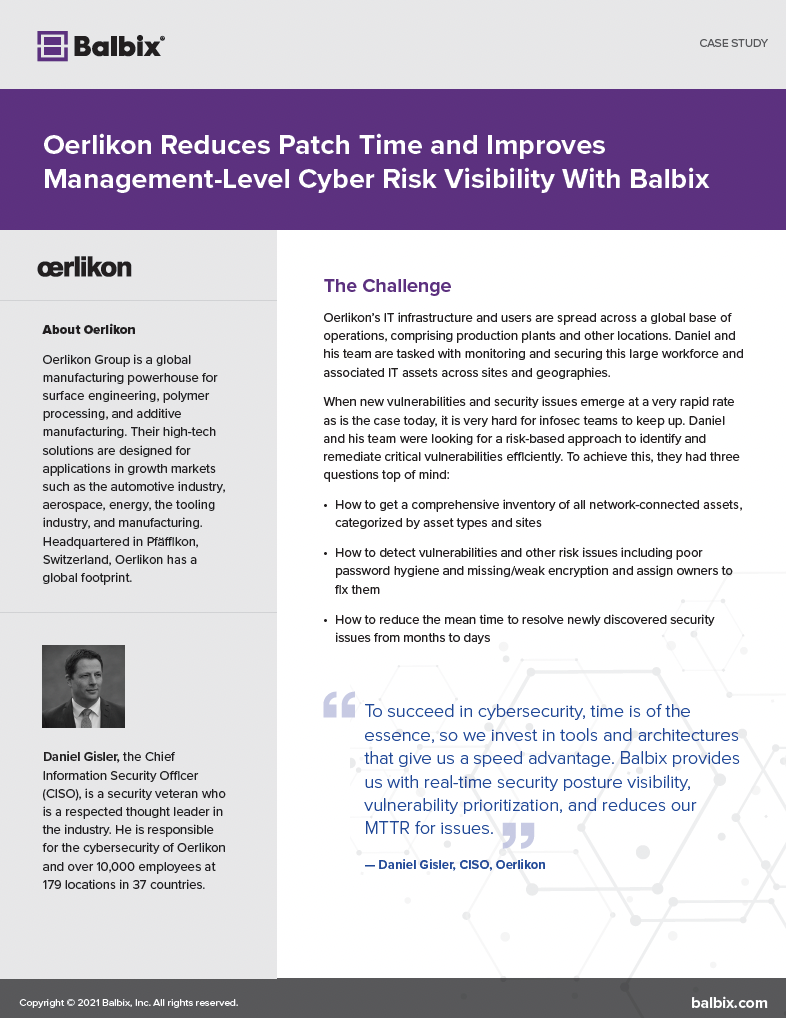When it comes to cybersecurity, knowledge is power. Understanding where your risks lie and quantifying their impact can mean the difference between staying protected and falling victim to an attack. Cyber Risk Quantification (CRQ) platforms provide measurable insights into an organization’s risks, helping security teams prioritize and mitigate vulnerabilities effectively.
This article will explore Cyber Risk Quantification tools and why they’re essential for modern security frameworks. We’ll also review the top seven platforms leading the way in 2024.
What Are Cyber Risk Quantification Platforms?
Cyber Risk Quantification (CRQ) platforms use advanced analytics, automation, and artificial intelligence (AI) to assess and measure an organization’s cybersecurity risks. These tools evaluate vulnerabilities, pinpoint gaps, and prioritize actions based on potential threats’ financial and operational impact.
Unlike generic threat analysis tools, CRQ platforms focus on risks specific to an organization’s unique digital ecosystem. Translating complex security data into actionable metrics empowers IT leaders, risk managers, and cybersecurity professionals to make strategic decisions and improve overall resilience.
Key Features to Look for in a Cyber Risk Quantification Platform
Not all CRQ tools are created equal. To find the best fit for your organization, look for these essential features:
- Vulnerability Discovery and Assessment: Comprehensive tools identify vulnerabilities across systems, networks, and applications to minimize the risk of unnoticed gaps.
- AI-Powered Data Correlation: AI eliminates noise by deduplicating and correlating security data from multiple sources, enabling teams to focus on the most critical risks.
- Customizable Reporting: Effective platforms offer easy-to-understand, visual reports that translate risks into accessible language for technical and non-technical stakeholders.
- Seamless Integration: Look for tools that integrate effortlessly with your existing security stack to streamline workflows and avoid disruptions.
- Scalability: Ensure the platform can grow alongside your organization, adapting to evolving security needs and larger digital ecosystems.
Organizations can select a solution that addresses current challenges by evaluating platforms based on these features while supporting future growth.
The Top 7 Cyber Risk Quantification Platforms
Here are seven of the leading platforms that stand out in the CRQ space:
1. Balbix
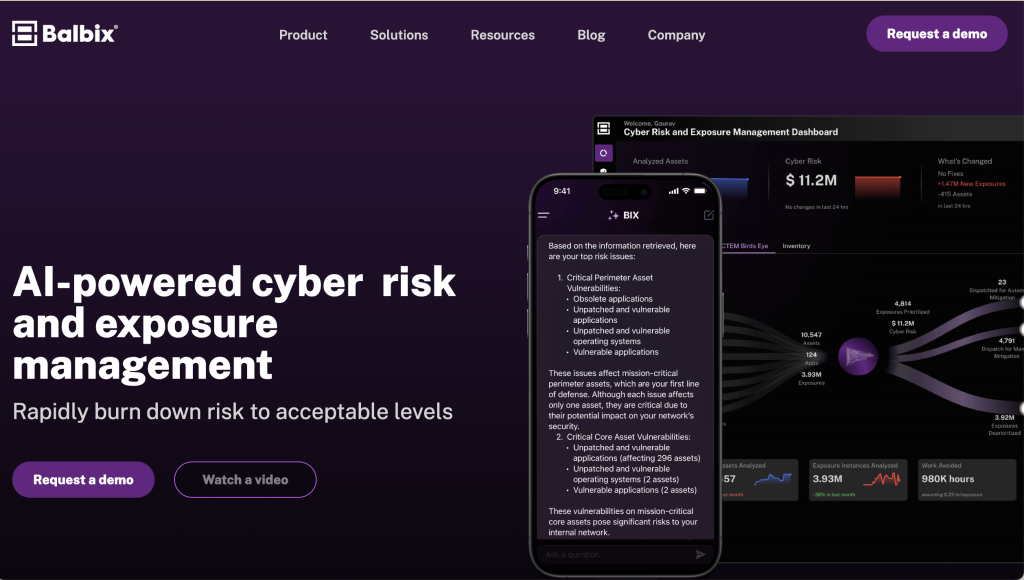
Balbix identifies unseen risks and helps organizations prioritize the actions that matter most.
- Core Features: AI-powered deduplication, automated asset discovery, actionable recommendations, and full visibility into risk.
- Why It Stands Out: Balbix simplifies risk quantification by consolidating data from siloed tools into a unified view. Security teams gain actionable insights that prioritize high-impact vulnerabilities, helping reduce material risks and improve decision-making.
2. ThreatConnect
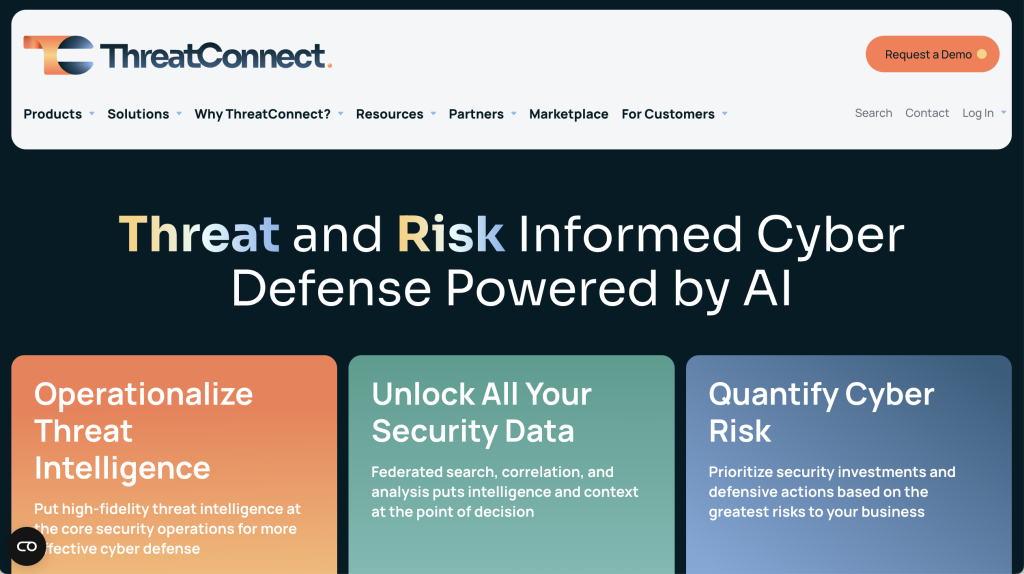
ThreatConnect combines threat intelligence with CRQ, helping align security strategies with business outcomes.
- Core Features: Decision-support dashboards and integrated threat intelligence.
- Why It Stands Out: Combines CRQ with threat intelligence to help organizations align cybersecurity investments with business outcomes.
3. CyberSaint

CyberSaint offers automated compliance and risk assessments, which saves time and improves accuracy.
- Core Features: Real-time compliance tracking, automated workflows, and custom dashboards.
- Why It Stands Out: CyberSaint excels at automating risk assessments, saving time, and reducing manual efforts while enhancing visibility into an organization’s risk posture.
4. Safe Security
Safe Security provides a bird’s-eye view of incident response readiness for teams managing asset risk.
- Core Features: Real-time assessments, AI-powered predictions, and continuous monitoring.
- Why It Stands Out: Provides actionable insights into asset risk changes, helping organizations stay proactive in mitigating evolving threats.
5. SecurityScorecard
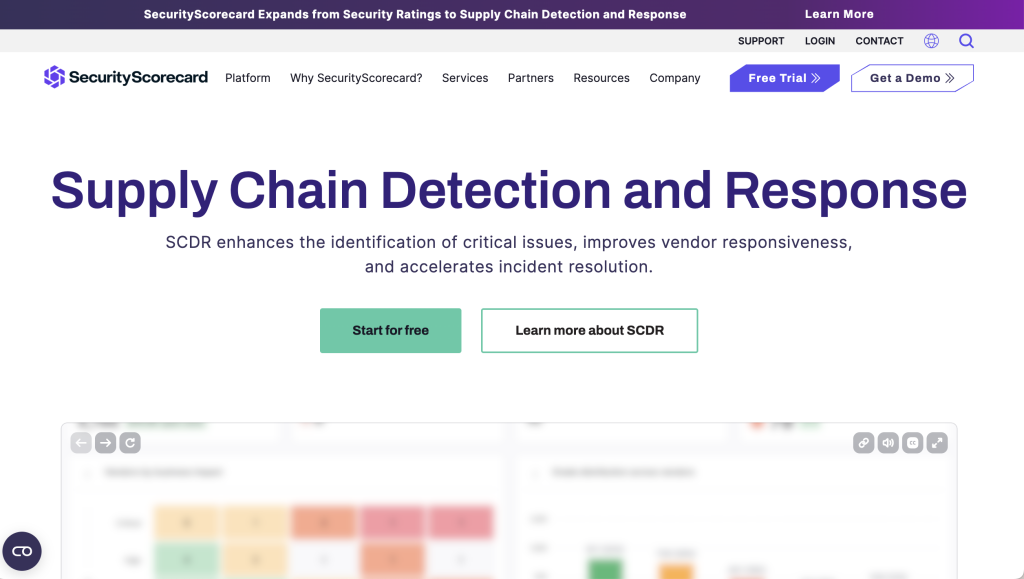
SecurityScorecard is renowned for its simplicity in vendor risk management and external security evaluations.
- Core Features: Security ratings, third-party risk management, and compliance tracking.
- Why It Stands Out: SecurityScorecard simplifies vendor risk management and benchmarks security posture against industry standards, improving stakeholder communication.
6. Tenable

Tenable focuses on reducing vulnerabilities across large-scale IT environments.
- Core Features: Predictive analytics, vulnerability prioritization, and integrated dashboards.
- Why It Stands Out: Tenable helps organizations identify and prioritize critical vulnerabilities, enabling faster, more effective remediation efforts.
7. BitSight
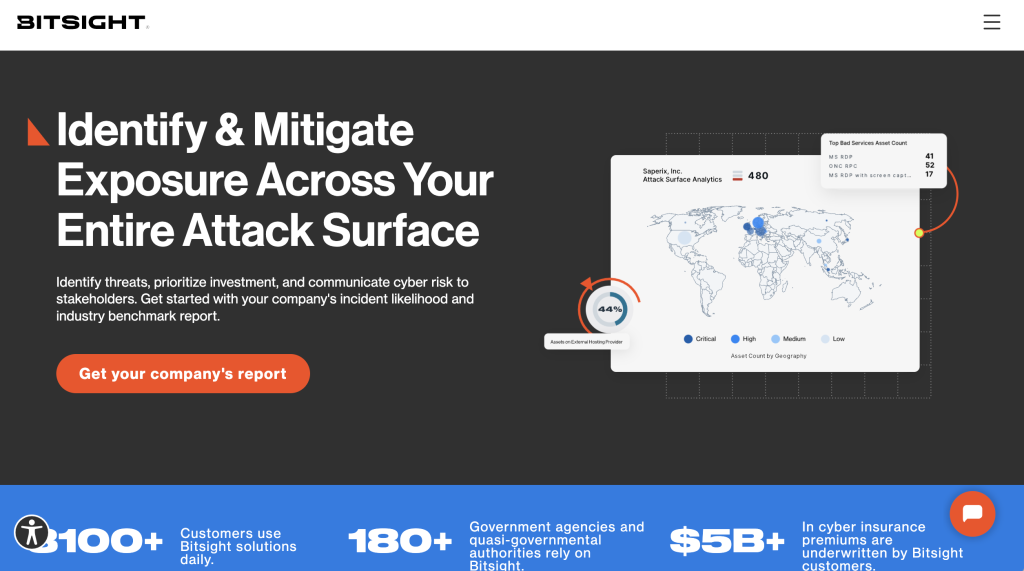
BitSight delivers security ratings that are easy for technical and non-technical stakeholders to digest.
- Core Features: Security ratings, external risk assessment, and vendor management.
- Why It Stands Out: BitSight’s user-friendly security metrics make it easier for organizations to communicate risk levels with technical teams and executives.
Benefits of Cyber Risk Quantification Platforms
Implementing cyber risk quantification tools provides significant benefits:
- Quantifiable Insights into Risks: CRQ tools assign measurable values to cybersecurity risks, making it easier to compare and prioritize threats.
- Efficient Use of Resources: Automation reduces manual workloads, allowing security teams to focus on mitigating high-priority vulnerabilities.
- Streamlined Compliance: Many platforms generate audit-ready reports aligned with regulatory standards, saving time during compliance reviews.
- Improved Security Posture: Organizations can strengthen their resilience by continuously tracking and addressing risks.
How to Choose the Right Cyber Risk Quantification Platform
With so many options available, here are some steps to help you select the best platform for your organization:
- Define Objectives: Identify the risks you want to manage (e.g., external threats, supply chain vulnerabilities, or internal gaps).
- Evaluate Usability: Choose a user-friendly platform your team can adopt quickly and effectively.
- Assess Integration: Ensure the platform integrates with your existing tech stack to avoid disruptions.
- Request a Demo: Use free trials to see how the tool aligns with your organization’s needs.
- Plan for the Future: Select a platform that scales with your organization as it grows.
Take Steps to Build a Resilient Risk Management Strategy
Investing in Cyber Risk Quantification platforms is no longer optional in today’s cyber risk threat landscape—it’s essential. These tools transform raw security data into actionable insights, enabling organizations to address vulnerabilities efficiently and improve their overall security posture.
Of the platforms listed, Balbix stands out for its ability to unify data, streamline workflows, and provide actionable recommendations that reduce material risks.
👉 Ready to see how Balbix can transform your approach to cyber risk? Schedule a demo now.
Frequently Asked Questions
- What are Cyber Risk Quantification (CRQ) platforms, and how do they work?
-
Cyber Risk Quantification (CRQ) platforms are security tools that measure, analyze, and prioritize cybersecurity risks based on their potential financial and operational impact. These platforms use AI, automation, and analytics to identify vulnerabilities, assess exposure, and provide actionable insights for risk mitigation. By translating complex security data into quantifiable metrics, CRQ tools help organizations make informed decisions about their cybersecurity investments.
- What are the key benefits of using cyber risk quantification tools?
-
Cyber risk quantification tools provide several benefits, including:
- Data-driven decision-making: Assign financial values to risks for better prioritization.
- Improved resource allocation: Focus on the most critical vulnerabilities.
- Regulatory compliance support: Generate audit-ready reports for frameworks like NIST, ISO, and CIS.
- Enhanced security posture: Continuously track, measure, and mitigate risks.
- Seamless integrations: Work with existing security tools to streamline workflows.
- How do CRQ platforms differ from traditional risk assessment tools?
-
Unlike traditional risk assessment tools that rely on qualitative scoring or static checklists, CRQ platforms use quantitative analysis to measure risk in real-time. Cyber risk quantification tools leverage AI, threat intelligence, and automated data correlation to provide a dynamic, data-driven view of an organization’s risk landscape. This approach helps security teams prioritize threats based on their business impact rather than subjective estimations.
- What should organizations look for when choosing a cyber risk quantification platform?
-
When selecting a cyber risk quantification platform, organizations should consider:
- Scalability: The platform should support future growth.
- Integration capabilities: Seamless connection with existing security tools.
- Customization: Tailored risk models and reporting.
- Automation: AI-driven risk assessments and prioritization.
- User-friendly dashboards: Clear, actionable insights for both security teams and executives.
- What are the top cyber risk quantification platforms in 2025?
-
Some of the leading cyber risk quantification platforms in 2025 include:
- Balbix – AI-powered risk quantification and prioritization.
- ThreatConnect – Combines threat intelligence with CRQ.
- CyberSaint – Automates compliance and risk assessments.
- Safe Security – AI-driven risk predictions and continuous monitoring.
- SecurityScorecard – Vendor risk management and security ratings.
- Tenable – Vulnerability prioritization and predictive analytics.
- BitSight – External risk assessment and security ratings.
These platforms help organizations measure, manage, and mitigate cybersecurity risks effectively.

